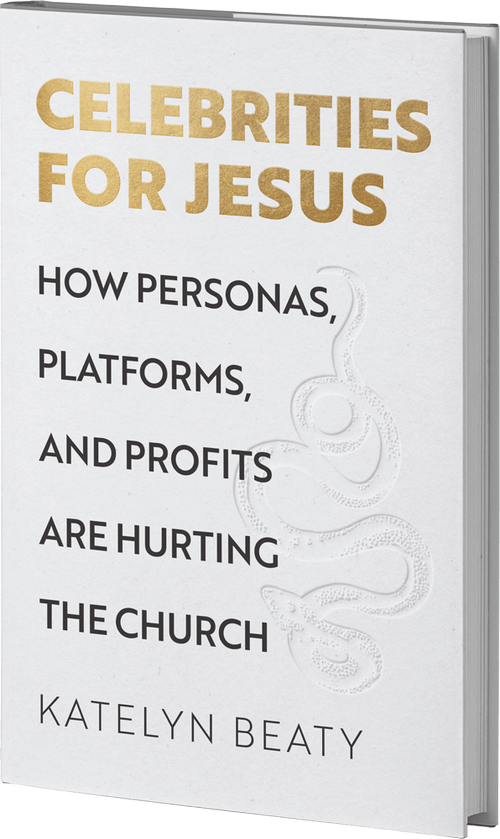
A silver studio microphone on a white background | © sv_production/stock.adobe.com
When I accepted Jesus into my heart in 1998, in response to a gospel message at a youth rally at a local church, I had no idea what that event meant or the history it ushered me into. I just knew that I wanted to stand for Jesus—literally stand, as the speaker invited us to do. As a thirteen-year-old, I distinctly remember wondering what the boys in our youth group would think if I stood up from my seat, if they would call me a “dork” (the worst thing I could imagine at the time). But a stirring in my young, open spirit compelled me to stand no matter the cost. Riding home in the back seat of my parents’ car that night, my heart felt warm, aglow with something new. It was like the strange warmth that John Wesley, the founder of Methodism, described experiencing after hearing a sermon on the book of Romans another world away.
The day after, I wrote in my journal, “I went to a Geoff Moore and the Distance concert on Saturday and it brought me a lot closer to God. . . . I think it saved me, or already made me realize I was saved. I’m glad I went.”
 I didn’t know about John Wesley at the time, but it was fitting that my Christian conversion echoed his. Our family had attended United Methodist churches during my upbringing, as we moved every few years for my dad’s military career. In 1996, we began attending a different kind of church: a “seeker sensitive” congregation in southwest Ohio. Mimicking popular megachurches like Willow Creek and Saddleback, it featured guitars during worship and simple sermons that often drew from pop culture. Our pastor wore open-toed sandals. His messages were simple, relevant, and positive. The approach was working: membership was growing, and the church was building a new worship center/gym featuring video screens on the walls. It was a UMC church, but nothing about our life together signaled to me that we were part of a tradition going back to Wesley. I had no idea we were part of an ecclesial institution with more than 12 million members in 32,000 churches across the globe.
I didn’t know about John Wesley at the time, but it was fitting that my Christian conversion echoed his. Our family had attended United Methodist churches during my upbringing, as we moved every few years for my dad’s military career. In 1996, we began attending a different kind of church: a “seeker sensitive” congregation in southwest Ohio. Mimicking popular megachurches like Willow Creek and Saddleback, it featured guitars during worship and simple sermons that often drew from pop culture. Our pastor wore open-toed sandals. His messages were simple, relevant, and positive. The approach was working: membership was growing, and the church was building a new worship center/gym featuring video screens on the walls. It was a UMC church, but nothing about our life together signaled to me that we were part of a tradition going back to Wesley. I had no idea we were part of an ecclesial institution with more than 12 million members in 32,000 churches across the globe.
Famous Christians were fixtures of my adolescence. After I came to Christ, I was introduced to musicians, speakers, pastors, and authors who would form my burgeoning faith, even though my only relationship to them was that I purchased their albums and books and heard their messages on a stage far away. This was the late 1990s and early 2000s, arguably the peak of evangelical youth culture. We learned we needed to stand apart from secularists who were forcing prayer out of public schools and filling young minds with American Pie and Britney Spears. Instead of questioning mainstream celebrity culture, though, Christians had overall mimicked it. Secular culture had its celebrities, but so did we. DC Talk made edgy music videos that looked and sounded like Nirvana. Rebecca St. James was our Alanis Morissette, although all her angst seemed to be about retaining her sexual purity. Gospel artist Kirk Franklin had a crossover hit with “Stomp,” with the lyrics “I can’t explain it, I can’t obtain it / Jesus your love is so, it’s so amazing” blasting on the local top 40 radio station after Puff Daddy.
And the Newsboys drummer had a revolving drum set. A revolving drum set!
The strategy of swapping out secular celebrities for Christian ones was overt. At the 2000 Acquire the Fire conference, before thousands of teenagers packed into a stadium in Muncie, Indiana, Teen Mania founder Ron Luce told us to trade our profane CDs for their Christian alternatives. Like Blink-182? Listen to Five Iron Frenzy instead. Ditch the Mighty Mighty Bosstones for the W’s. Sixpence None the Richer was okay, as long as we understood that “Kiss Me” was about Christ’s love for the church. The lesson was that Christian youth could be cool and that the Contemporary Christian Music industry had produced the stars for us to emulate and identify with during our formative years.
As I grew up, I was also introduced to Christian authors pushing back against the rising tide of secularism coming for the country’s politics and schools. At age twenty-one, Joshua Harris was thrust into the national limelight by making a stand for chastity and traditional courtship in his 1997 bestseller, I Kissed Dating Goodbye. Ravi Zacharias and Lee Strobel, famous international apologists, wrote scores of books making the case that Christianity was intellectually sound. We even had a Christian celebrity emerge from the 1999 Columbine shooting: Cassie Bernall, who was alleged to have said yes when her killers asked if she believed in God. She and fellow victim Rachel Scott were hailed by Christian media and publishers as modern martyrs.
I didn’t know it at the time, but these and other figures were part of a vast constellation of personalities who defined the evangelical movement in the late-modern West—much more so than did the vast expanse of church history, the creeds, or denominations. Later on, I’d learn that celebrity is a feature, not a bug, of the contemporary evangelical movement. However one traces the unwieldy history of evangelicalism—unwieldy precisely because of its decentralized nature—one finds a dynamic spiritual movement of Christians sharing the gospel using the tools at their disposal in a specific cultural context. Paul the apostle had shared the gospel using the tools of reason and philosophy in the marketplace of the Areopagus. He writes in 1 Corinthians, “I have become all things to all people so that by all possible means I might save some” (9:22). In a mass media culture driven by visual appeal, slick marketing, and personal branding, celebrity is just one more tool Christians have used to reach people for Christ.
Indeed, many Christians have used their fame, passion, and tech savvy for good kingdom purposes, sharing the gospel via mass media culture, whose global reach Paul could only have dreamed of. As far as we can tell (not knowing their inner lives), many famous Christians stand on these large platforms with integrity. To them, celebrity is one tool used to build the house of God—not the house itself. They’re willing to part with their fame or prestige if it no longer serves primary kingdom purposes.
But other Christians have reached for the tool of celebrity and found that it isn’t really a tool at all. It has more power over the user than the user has over it. It turns out to be a wild animal—cunning, slippery, and insidious. And that wild animal is now tearing up the house of God from the inside out.
Content taken from Celebrities for Jesus by Katelyn Beaty, ©2022. Used by permission of Brazos Press.










